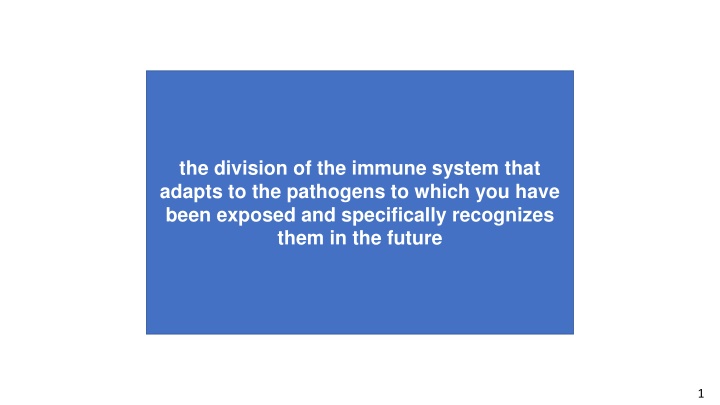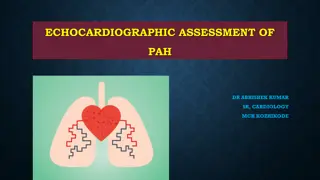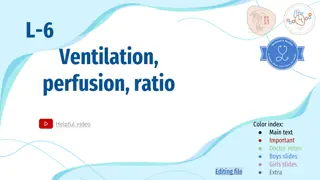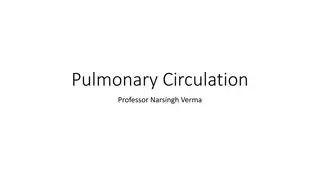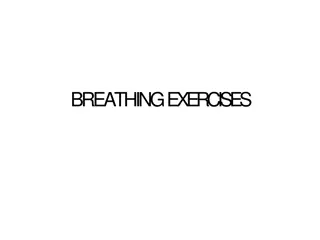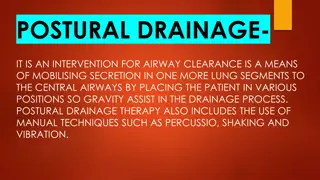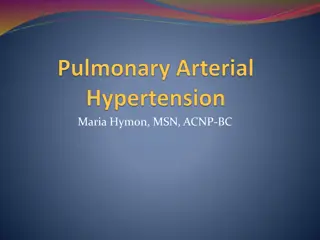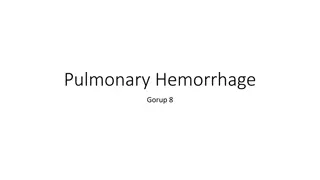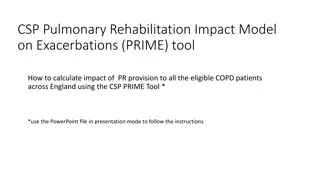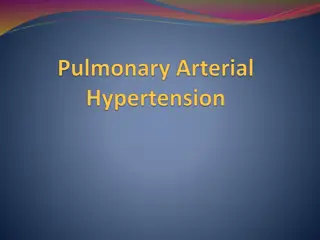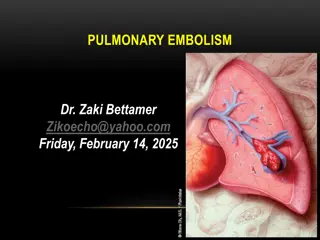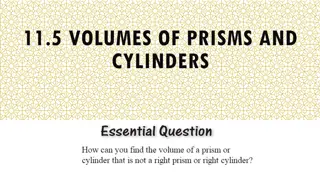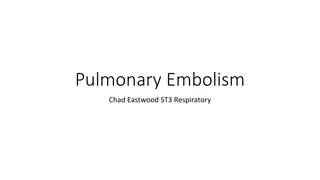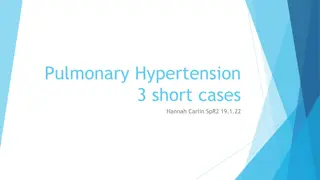Pulmonary Volumes and Capacities
This lecture covers various lung volumes and capacities, ventilation rates, types of dead space, minute ventilation, and more. It explains the definitions, typical values, and measurements related to respiratory physiology, such as tidal volume, inspiratory reserve volume, vital capacity, and minute respiratory volume.
Download Presentation

Please find below an Image/Link to download the presentation.
The content on the website is provided AS IS for your information and personal use only. It may not be sold, licensed, or shared on other websites without obtaining consent from the author.If you encounter any issues during the download, it is possible that the publisher has removed the file from their server.
You are allowed to download the files provided on this website for personal or commercial use, subject to the condition that they are used lawfully. All files are the property of their respective owners.
The content on the website is provided AS IS for your information and personal use only. It may not be sold, licensed, or shared on other websites without obtaining consent from the author.
E N D
Presentation Transcript
the division of the immune system that adapts to the pathogens to which you have been exposed and specifically recognizes them in the future 1
loss of taste the outer portion of the adrenal gland 2
retinal neurons located between the bipolar and ganglion cells the central part of the adrenal gland 3
a stress hormone released from the anterior loss of smell pituitary 4
adrenocorticotropic hormone anosmia (ACTH) 4
the area of the cortex dedicated to auditory processing stimuli a brain area that recognizes threatening 5
auditory cortex amygdala 5
the part of the peripheral nervous system that influences the function of carries auditory signals from the inner ear to the brain internal organs 6
auditory nerve autonomic nervous system 6
Vibrating fluid in the cochlea causes the____ to move in a wave-like fashion in response to soundwaves. An unpleasant stimulus is also called a(n) ____ stimulus. 7
basilar membrane aversive stimulus 7
neurons in the retina that receive visual input from photoreceptors and send output to retinal ganglion cells one s physiological state prior to the appearance of a stressor 8
bipolar cells baseline (physiological state) 8
the ability to respond to visual information without conscious awareness increasing GABA activity in the brain a class of drugs used to treat anxiety by 9
blindsight benzodiazepines 9
the portion of the retina containing the optic disk and no photoreceptors long-term (stressors) 10
blind spot chronic (stressors) 10
hearing loss resulting from disruption of the auditory signal along its route through the brain thought processes psychological therapy designed to help the individual reevaluate anxiety-provoking 11
Cognitive Behavioral Therapy central hearing loss (or Rational Emotive Behavioral Therapy) 11
A receptive field in which light hitting a particular retinal location excites a neuron, and light hitting the surrounding area inhibits it is called a ____ receptive field. a stimulus whose rewarding or aversive value comes from its association with an unconditioned stimulus 12
centersurround receptive field conditioned stimulus (CS) 12
pain-sensing receptors that respond to chemical toxins the major glucocorticoid hormone in rodents 13
chemical nociceptors corticosterone 13
a spiral-shaped structure in the inner ear containing fluid-filled canals hypothalamus a stress hormone released from the 14
corticotropin-releasing hormone cochlea (CRH) 14
a region of the medulla that receives input from the auditory nerve; not to be confused with the cochlea of the ear the major glucocorticoid in humans 15
cochlear nucleus cortisol 15
a neuron that responds to lines of specific orientations regardless of where the line appears in the visual field (____ can attract cells of the immune system to an area of infection.) molecules that can communicate with cells of the immune system (c___ cell) 16
complex cell cytokines 16
hearing loss resulting from the inability of sound to reach the ear drum or to affect the ossicles of the middle ear an area of the brainstem that contains the cell bodies of serotonin neurons 17
conductive hearing loss dorsal raphe nucleus 17
the type of photoreceptor found mostly in the fovea and necessary for color vision produce long-term changes in gene expression the ability of environmental events to 18
cones epigenetics 18
the combining of information coming from many neurons to a smaller number of neuronal recipients (c___) the process of converting genetic instructions into a protein 19
convergence expression, gene 19
cessation of the performance of a learned behavior due to reward omission the protective outer layer of the eye (The rat stopped lever pressing during ____, for lever presses no longer resulted in food delivery.) 20
cornea extinction 20
the neural pathway originating in layer 6 of the primary visual cortex and terminating in the LGN of the thalamus a cluster of neuronal cell bodies in the peripheral nervous system (the____ pathway plays an important role in visual attention) 21
corticogeniculate pathway ganglion (pl. ganglia) 21
the collection of cell bodies of somatosensory neurons just outside the spinal cord worse case scenarios an anxiety disorder in which the individual persistently and excessively worries about 22
dorsal root ganglia generalized anxiety disorder 22
a group of cortical brain areas that specialize in detecting the location of objects, that is, where things are a stress hormone released from the adrenal cortex 23
dorsal stream glucocorticoid 23
a piece of tissue in the middle ear that vibrates in response to sound waves, also called the tympanic membrane maintenance of a physiological variable within a normal range 24
eardrum homeostasis 24
a system of stress hormones released by the central portion of the retina the hypothalamus, pituitary and adrenal gland 25
hypothalamic-pituitary-adrenal fovea (HPA) axis 25
